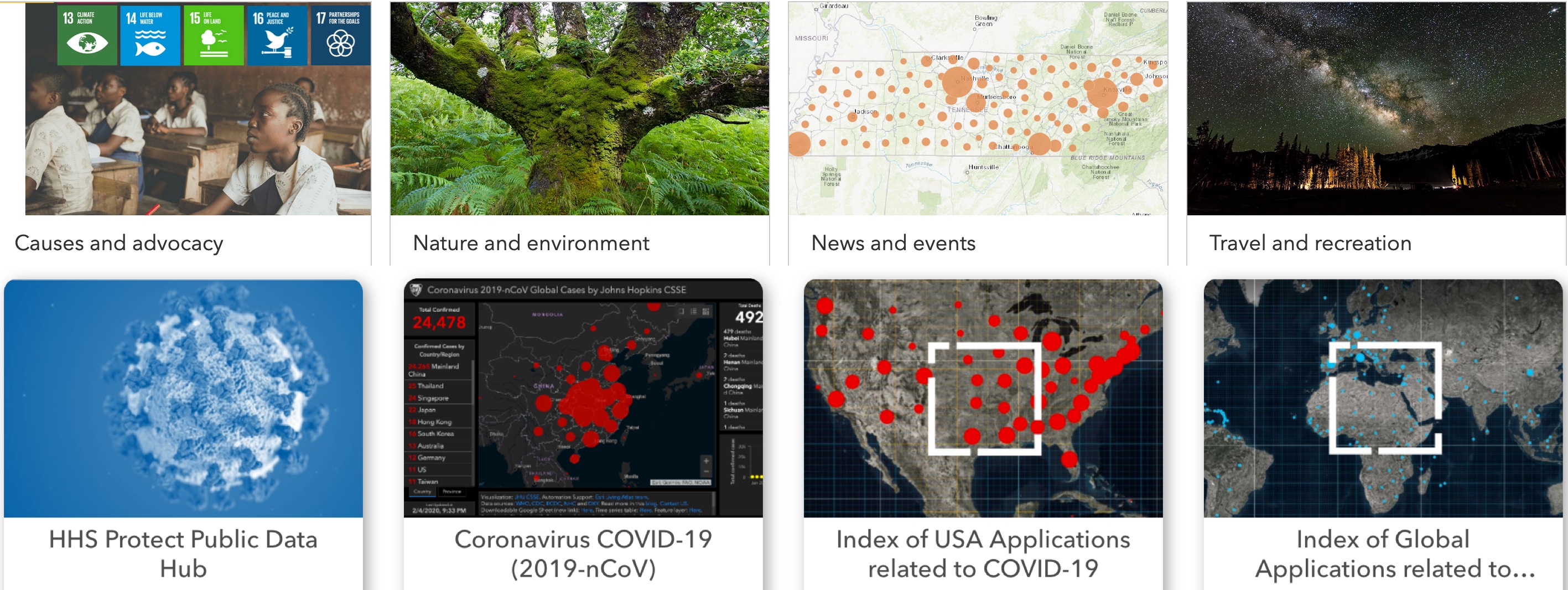- Home
- :
- All Communities
- :
- Industries
- :
- Education
- :
- Education Blog
- :
- Fun with GIS 275: Teaching with StoryMaps and Dash...
Fun with GIS 275: Teaching with StoryMaps and Dashboards
- Subscribe to RSS Feed
- Mark as New
- Mark as Read
- Bookmark
- Subscribe
- Printer Friendly Page
What I would do, were I still teaching? My practice, even in benign times, was to contemplate "If this were my students' last class ever in this field, what would I want them to leave with?" Above all else, I wanted them to be integrative critical thinkers, disposed to asking questions and learning insatiably. Today would likely be no different, and because of that we would take deep advantage of two tools: storymaps and dashboards.
Storymaps (whether ArcGIS StoryMaps or Classic Story Maps) allow the creator to design a presentation of content. The components can be galactic in scope, so creators must exercise self-control. Maps, apps, text, images, and video can be integrated and choreographed to maximize impact. Users can navigate out of sequence, but generally follow the author's plan. Some templates support "more story," while others support "more maps for investigation."
Dashboards allow the creator to take full advantage of rich numeric and categorical data about a topic, but leave it to the user to determine the path of exploration. Well-designed dashboards give enough info for the user to grasp the content of an element, and simply invite exploration, so different users may follow wildly different routes.

Storymaps, then, are ideal for presenting content and a vision, while dashboards are ideal for presenting content that emphasizes personal pondering and extensive investigation. Which is better? Both, of course! Like pliers and wrenches, still photos and videos, playlists and channels, each has advantages. Storymaps allow deep presentations; dashboards foster discovery. Were I teaching today, each would play a critical role in my classroom, whether focused on science or social studies, whether we were together in time and space or having virtual and even asynchronous interactions, whether students were younger or older. Building integrative critical thinkers, disposed to asking questions and learning insatiably, is what will help us survive and prosper.
Consider these examples:
- ArcGIS StoryMaps links
- Classic Story Maps links
- Dashboard links for many topics
- Dashboard and storymap links for Coronavirus & COVID-19
- Blog integrating data collection, map, dashboard, & storymap
You must be a registered user to add a comment. If you've already registered, sign in. Otherwise, register and sign in.
-
Administration
78 -
Announcements
80 -
Career & Tech Ed
1 -
Curriculum-Learning Resources
257 -
Education Facilities
24 -
Events
72 -
GeoInquiries
1 -
Higher Education
595 -
Informal Education
281 -
Licensing Best Practices
91 -
National Geographic MapMaker
33 -
Pedagogy and Education Theory
224 -
Schools (K - 12)
282 -
Schools (K-12)
272 -
Spatial data
35 -
STEM
3 -
Students - Higher Education
245 -
Students - K-12 Schools
128 -
Success Stories
36 -
TeacherDesk
1 -
Tech Tips
117
- « Previous
- Next »